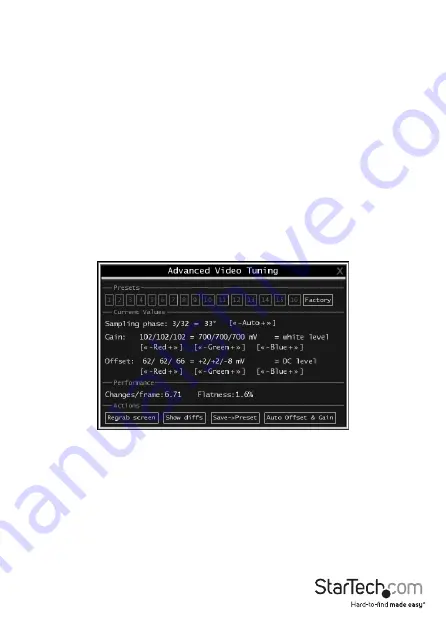
Instruction Manual
37
• Some external KVM switches generate video noise as well. Try to keep cables short,
in order to reduce this effect.
• Enable the Noise Filter option (on the Video Tuning menu) to mitigate noise issues.
Network performance
The SV1115IPEXT will always send as much data as it can, given what’s happening on
the screen and the actual network performance. When nothing is changing on the
video screen, zero bytes are sent over the network. If the whole screen is changing,
then the unit will send as much data as your network connection and VNC client allow.
Network latency, which is the total time it takes for a packet to get to the SV1115IPEXT
and come back, has the biggest impact on perceived performance and usability.
Network bandwidth has a lesser effect, particularly when just moving the mouse
around. Only a few bytes need to be sent when the mouse is moving (and nothing else
is changing on the screen), but the round-trip-time limits the hand-eye coordination
of the user if it is too great. Both actual bandwidth and measured network latency are
shown in the Main Menu.
Using the Advanced Video Tuning Feature
The Advanced Video Tuning menu allows you to adjust the qualities of the video
in your VNC sessions, and can be accessed by clicking the Advanced button on the
Video Tuning VNC menu. While many users will probably allow the SV1115IPEXT to
automatically configure the video properties, you can use this menu to exercise a great
deal of control over the settings if you wish.
















































